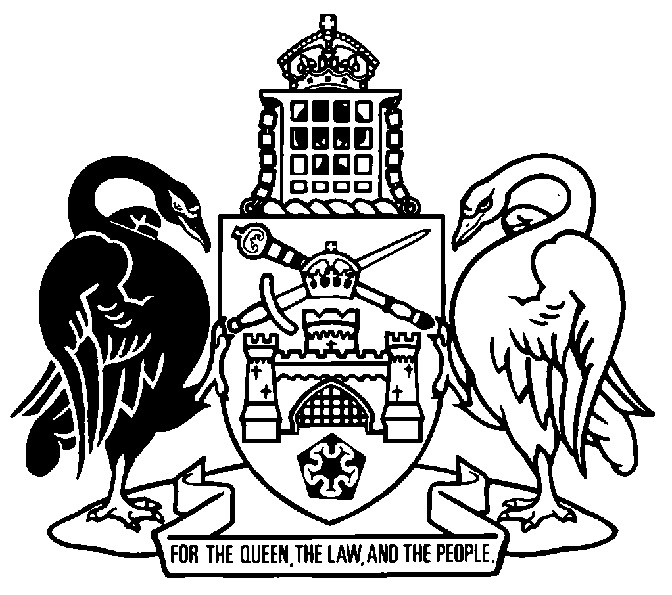 ACT Numbered Regulations - Explanatory Statements
ACT Numbered Regulations - Explanatory Statements ACT Numbered Regulations - Explanatory Statements
ACT Numbered Regulations - Explanatory Statements[Index] [Search] [Download] [Related Items] [Help]
CONFISCATION OF CRIMINAL ASSETS REGULATIONS 2003 (NO 25 OF 2003)

2003
THE LEGISLATIVE ASSEMBLY
FOR
THE AUSTRALIAN CAPITAL
TERRITORY
CONFISCATION OF CRIMINAL
ASSETS REGULATIONS 2003
EXPLANATORY
STATEMENT
SL2003-25
Circulated by the
authority of
Jon Stanhope MLA
Attorney-General
The Confiscation of Criminal Assets Regulations 2003 are made under
the Confiscation of Criminal Assets Act 2003 (the Act). The Act
provides for a scheme of restraint and forfeiture of property, income, or any
form of assets derived from, or used in, the commission of an
offence.
The regulations identify and specify corresponding law in other
jurisdictions to enable the restraint and forfeiture of property between, and
across, jurisdictions. The Commonwealth’s Proceeds of Crime Act 2002
is not listed, as the Commonwealth Act already has jurisdiction throughout
Australia and operates concurrently with state and territory legislation. The
Commonwealth has declared the ACT’s Act to be corresponding law to enable
the Commonwealth jurisdiction to recognise orders made in the ACT.
The
regulations prescribe narcotic substances that are to be included in the
assessment of the value of benefits derived from criminal activity, as
authorised by s 90 of the Act.
The regulations require police to notify
the Director of Public Prosecutions when proposing to restrain property under
the Act.
A rate to work out the annual management fee paid to the Public
Trustee for its role in managing restrained and forfeited assets under the Act
is set out in the regulations.
These are formal clauses which, respectively:
• state the name of
the regulations;
• provide for the commencement of the regulation,
namely upon the commencement of the Confiscation of Criminal Assets Act
2003; and
• stipulate that notes in the regulations are for
explanatory purposes and are not regulations in themselves.
Regulation 4 completes the definition of corresponding law in the dictionary of the Confiscation of Criminal Assets Act 2003, by listing corresponding laws in states and the Northern Territory.
Regulation 5(1) lists all of the provisions of corresponding laws which
equate to a restraining order under the ACT’s Confiscation of Criminal
Assets Act 2003.
Regulation 5(2) includes orders of corresponding
jurisdictions that have been made under consent or varied by the
jurisdictions’ courts. The order can be varied in terms of the
order’s directions, or in terms of the property covered by the
order.
Regulation 5 completes the definition of interstate restraining
order in the dictionary of the Confiscation of Criminal Assets Act
2003.
Regulation 6(1) lists all of the provisions of corresponding laws which
equate to an automatic forfeiture decision under the ACT’s Confiscation
of Criminal Assets Act 2003.
Regulation 6(2) includes orders of
corresponding jurisdictions that have been varied by the jurisdictions’
courts. The order can be varied in terms of the order’s directions, or in
terms of the property covered by the order.
Regulation 6 completes the
definition of interstate automatic forfeiture decision in the dictionary
of the Confiscation of Criminal Assets Act 2003.
Regulation 7(1) lists all of the provisions of corresponding laws which
equate to a civil forfeiture order under the ACT’s Confiscation of
Criminal Assets Act 2003.
Regulation 7(2) includes orders of
corresponding jurisdictions that have been made under consent or varied by the
jurisdictions’ courts. The order can be varied in terms of the
order’s directions, or in terms of the property covered by the
order.
Regulation 7 completes the definition of interstate civil
forfeiture order in the dictionary of the Confiscation of Criminal Assets
Act 2003.
Regulation 8(1) lists all of the provisions of corresponding laws which
equate to a conviction forfeiture order under the ACT’s Confiscation of
Criminal Assets Act 2003.
Regulation 8(2) includes orders of
corresponding jurisdictions that have been made under consent or varied by the
jurisdictions’ courts. The order can be varied in terms of the
order’s directions, or in terms of the property covered by the
order.
Regulation 8 completes the definition of interstate conviction
forfeiture order in the dictionary of the Confiscation of Criminal Assets
Act 2003.
Regulation 9(1) lists all of the provisions of corresponding laws which
equate to a penalty order under the ACT’s Confiscation of Criminal
Assets Act 2003.
Regulation 9(2) includes orders of corresponding
jurisdictions that have been made under consent or varied by the
jurisdictions’ courts. The order can be varied in terms of the
order’s directions.
Regulation 9 completes the definition of
interstate penalty order in the dictionary of the Confiscation of
Criminal Assets Act 2003.
Regulation 10 requires a police officer to notify the Director of Public Prosecutions if the police officer proposes that property should be restrained. The regulation sets out what should be in the notice to the DPP.
Division 7.3 of the Act enables the Court to assess the value of benefits derived by an offender, including the value of illegal drugs, for the purposes of making a penalty order. Section 90 of the Act defines narcotic substance by reference to the Customs Act 1901 (Cwlth). The Customs Act has a schedule of narcotic substances which is out of date. Regulation 13 provides for a schedule of drugs not yet listed under the Customs Act, which can be used to assess the value of illegal drugs. The schedule augments the existing definition of narcotic substance and does not replace the Customs Act schedule.
Regulation 12 sets out the method of calculating the Public Trustee’s annual management fee, as authorised by section 132(1)(d) of the Act.
Schedule 1 is the list of narcotic substances referred to in regulation 11.